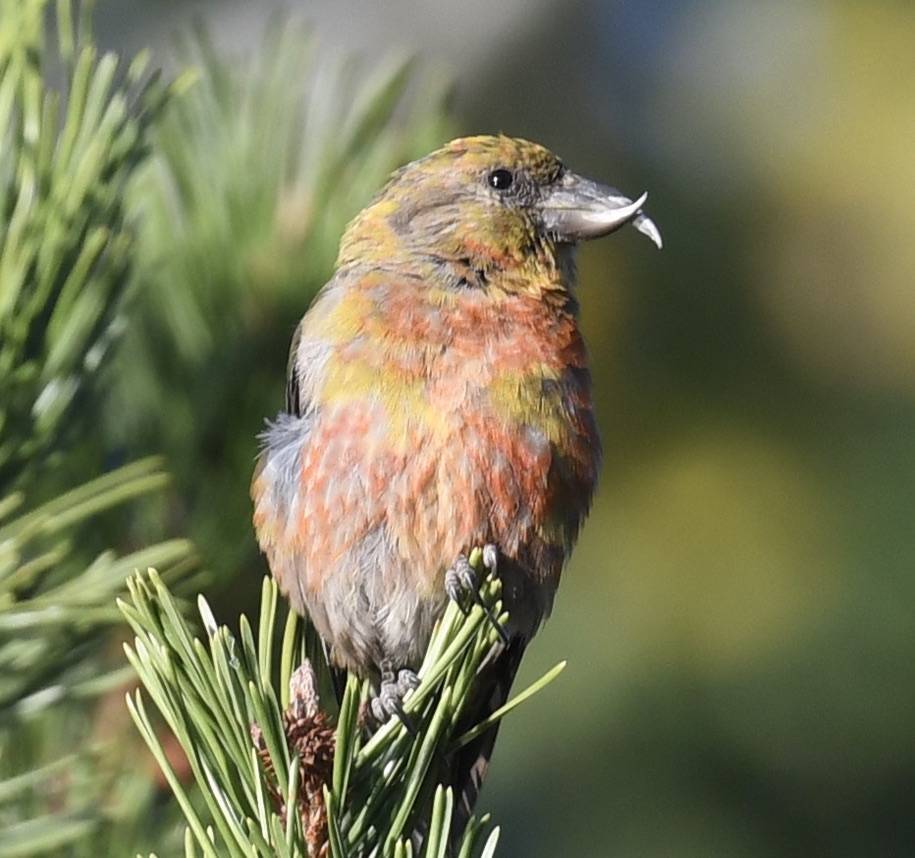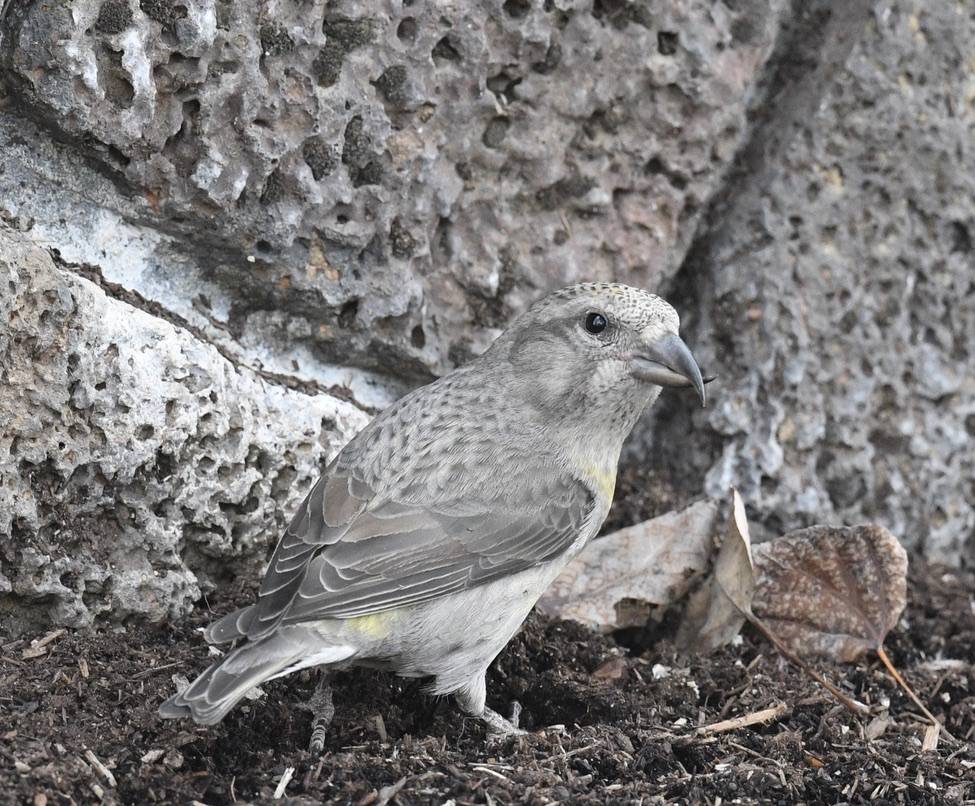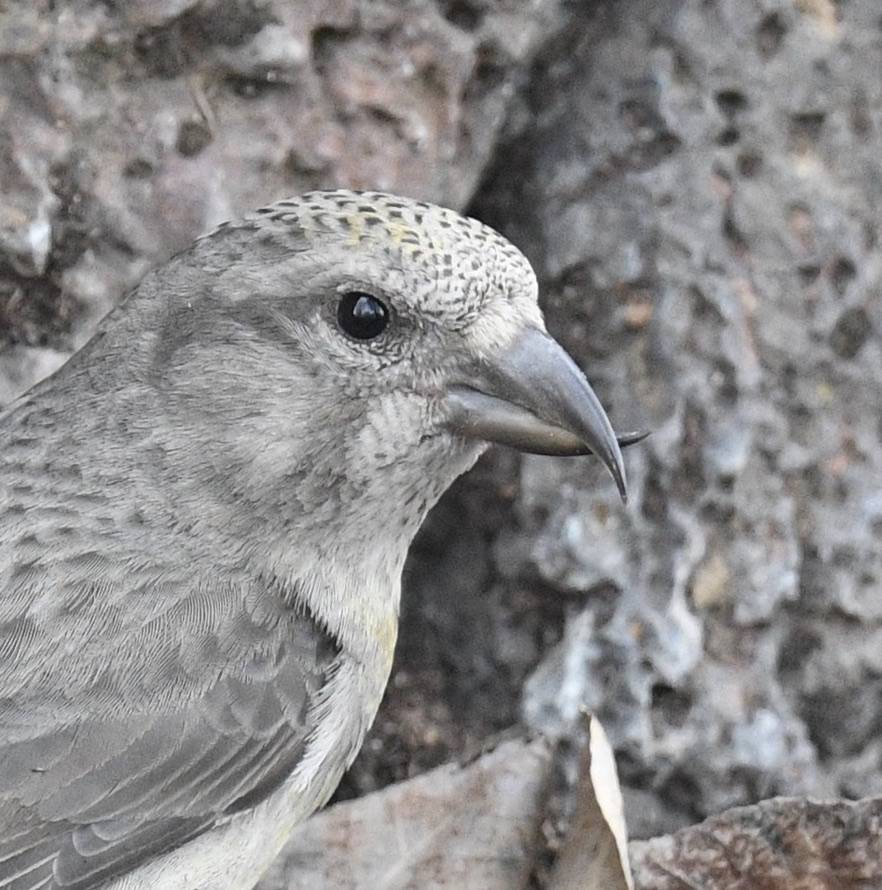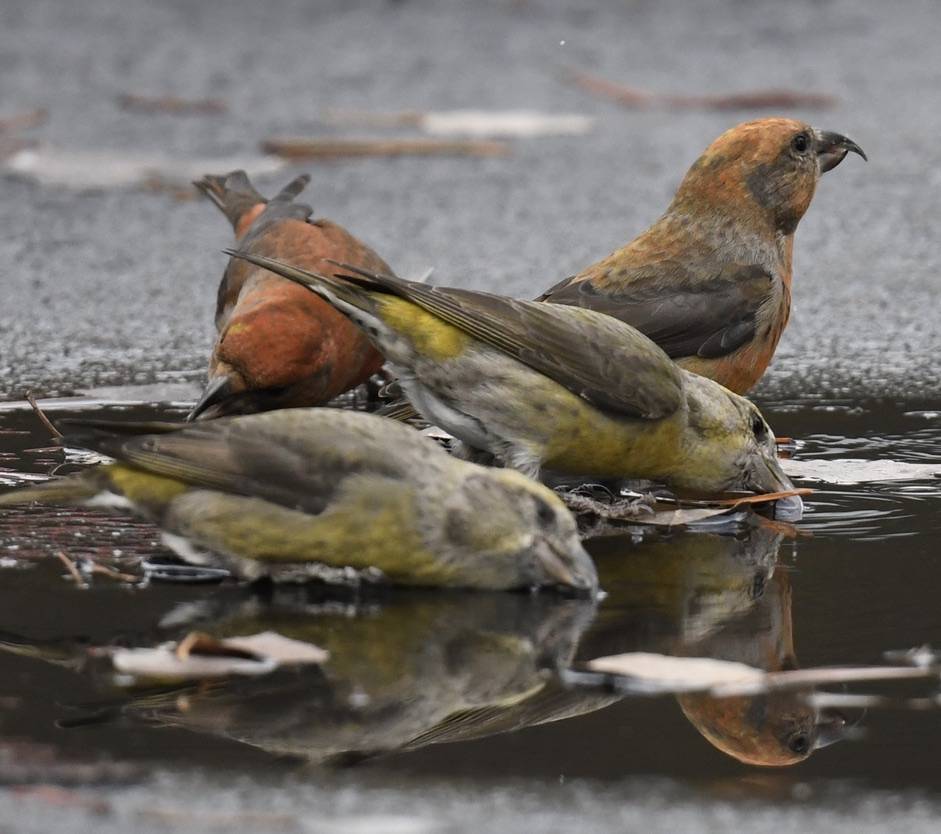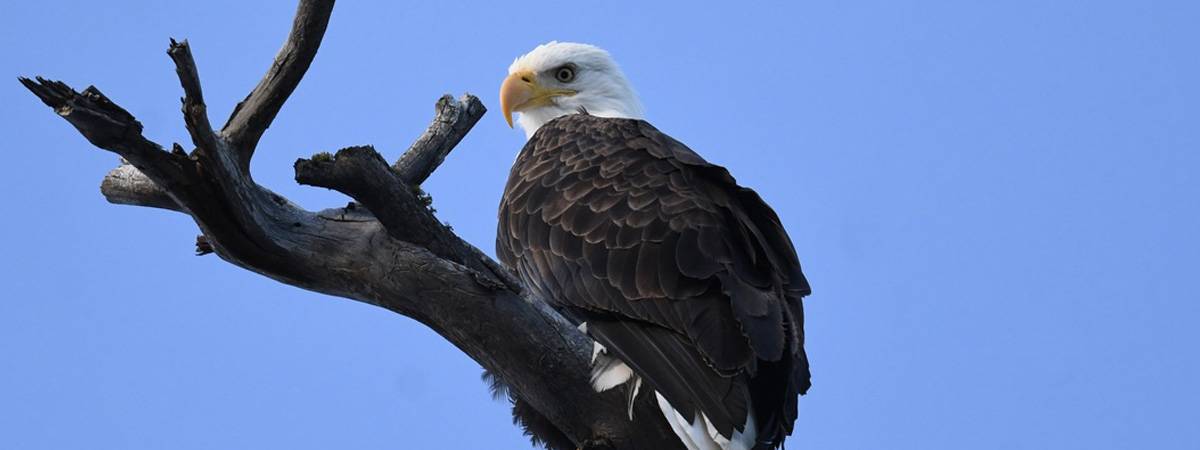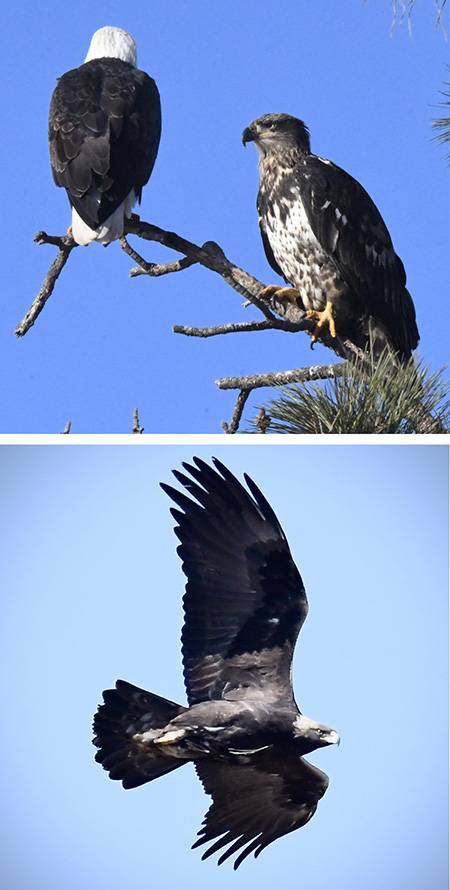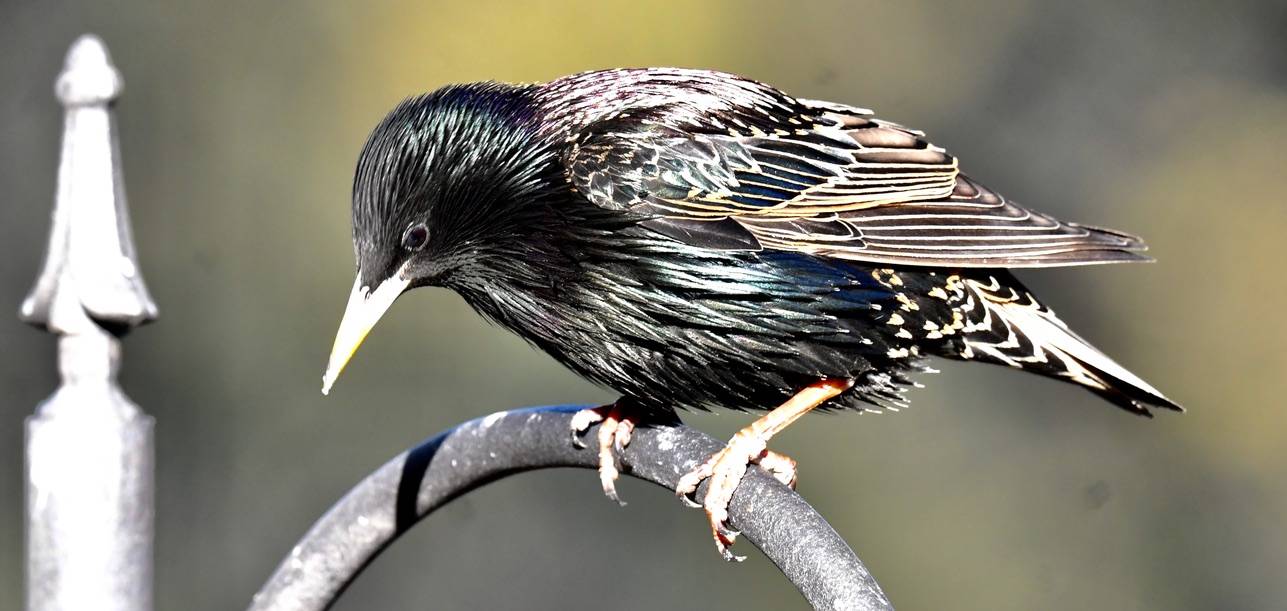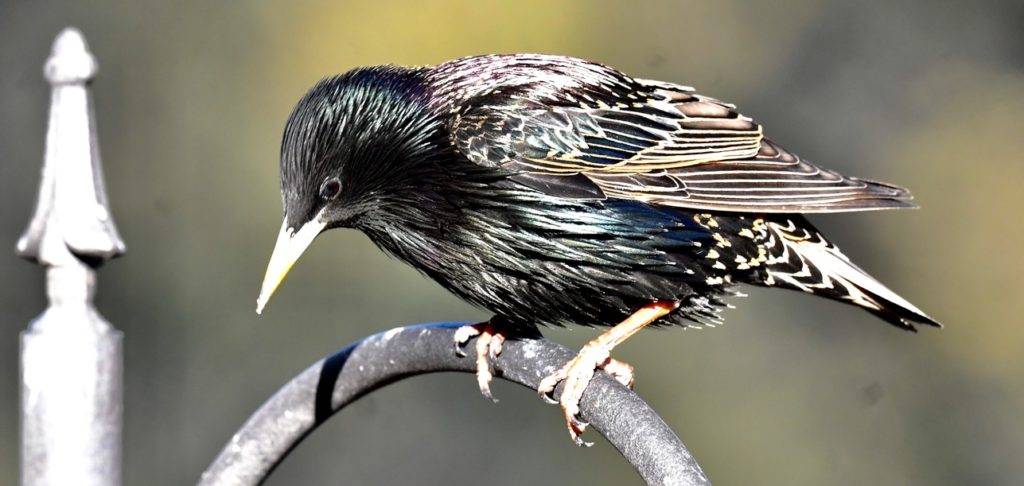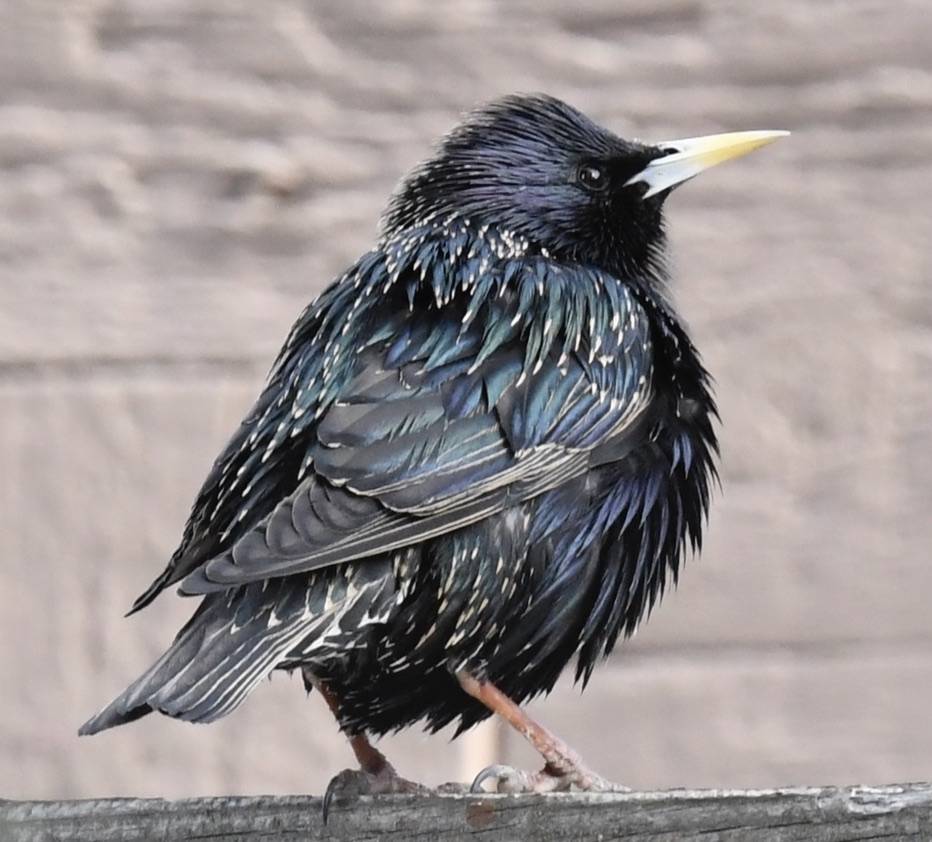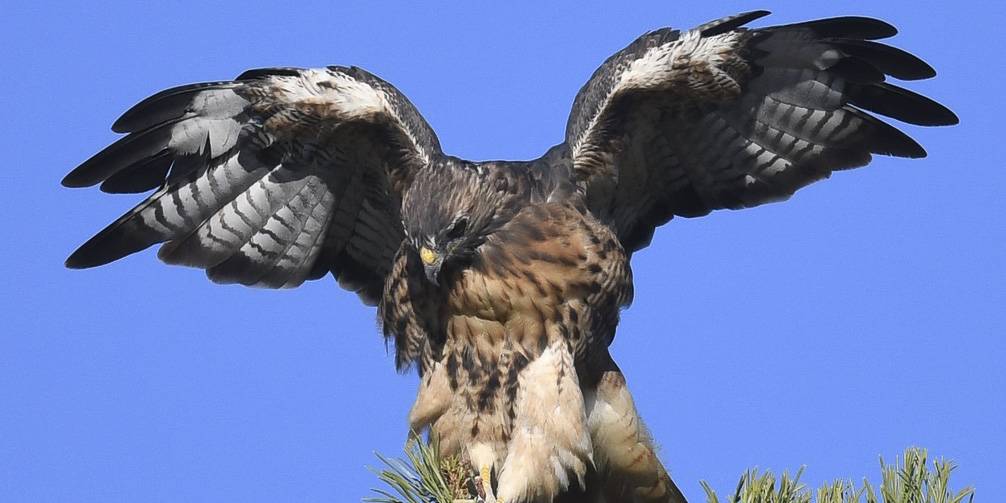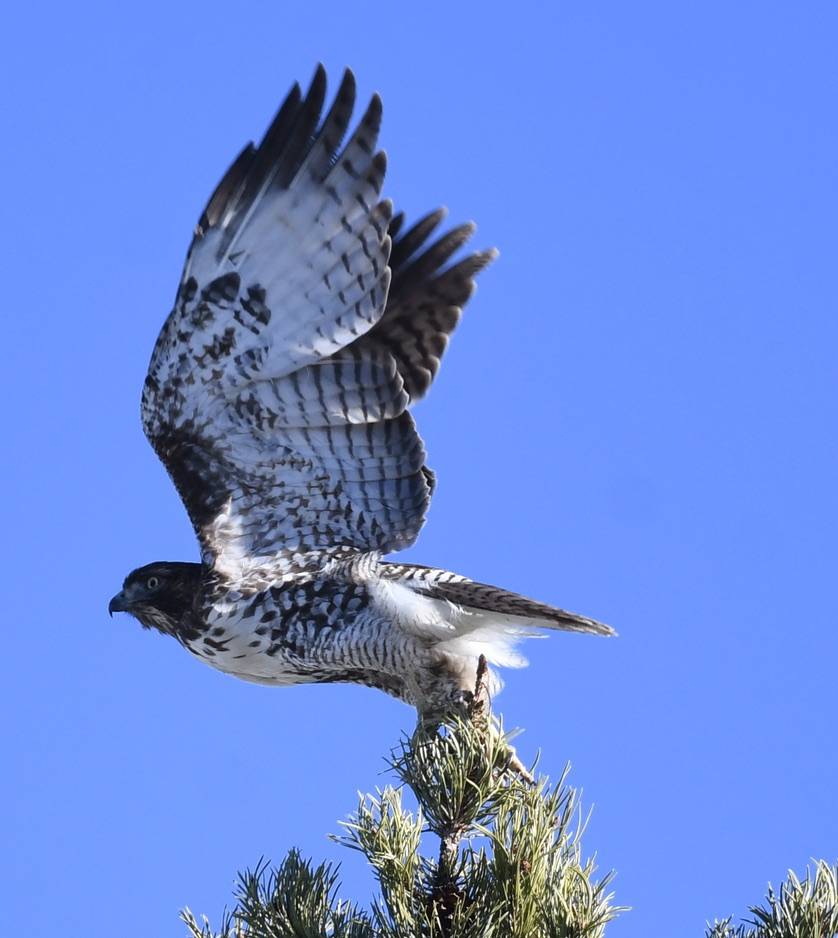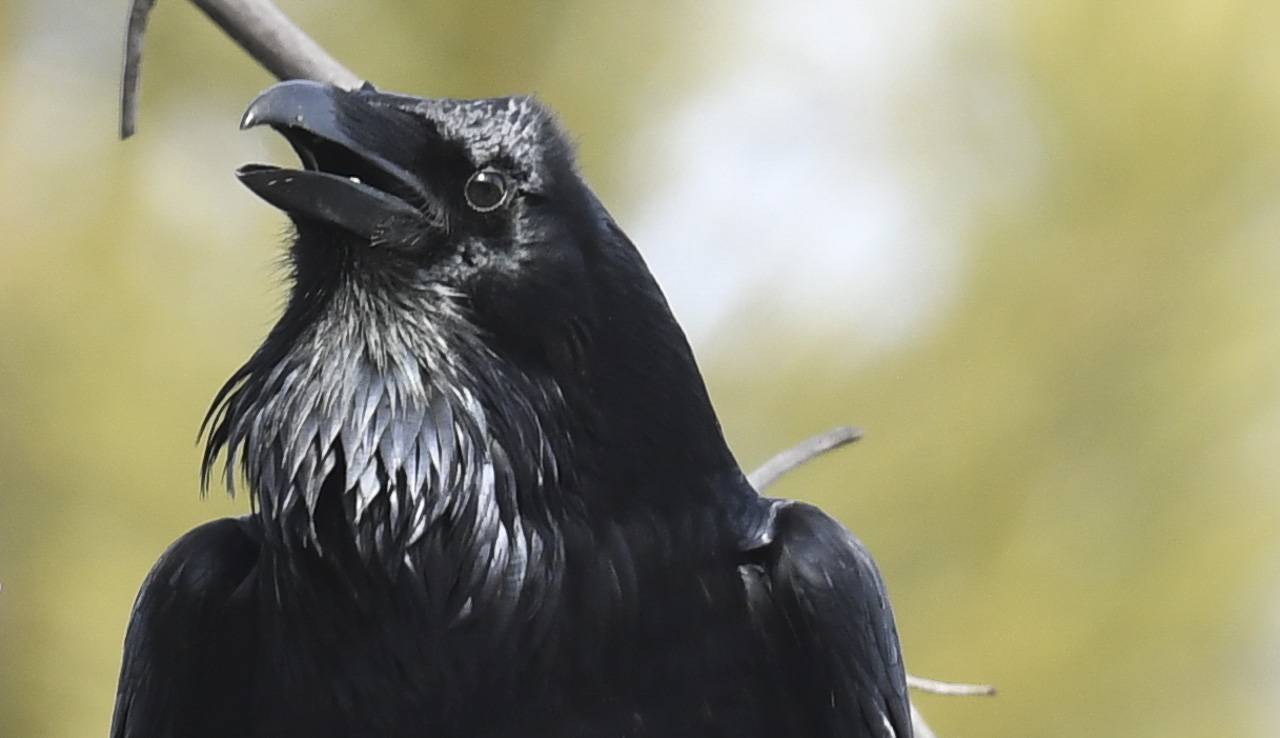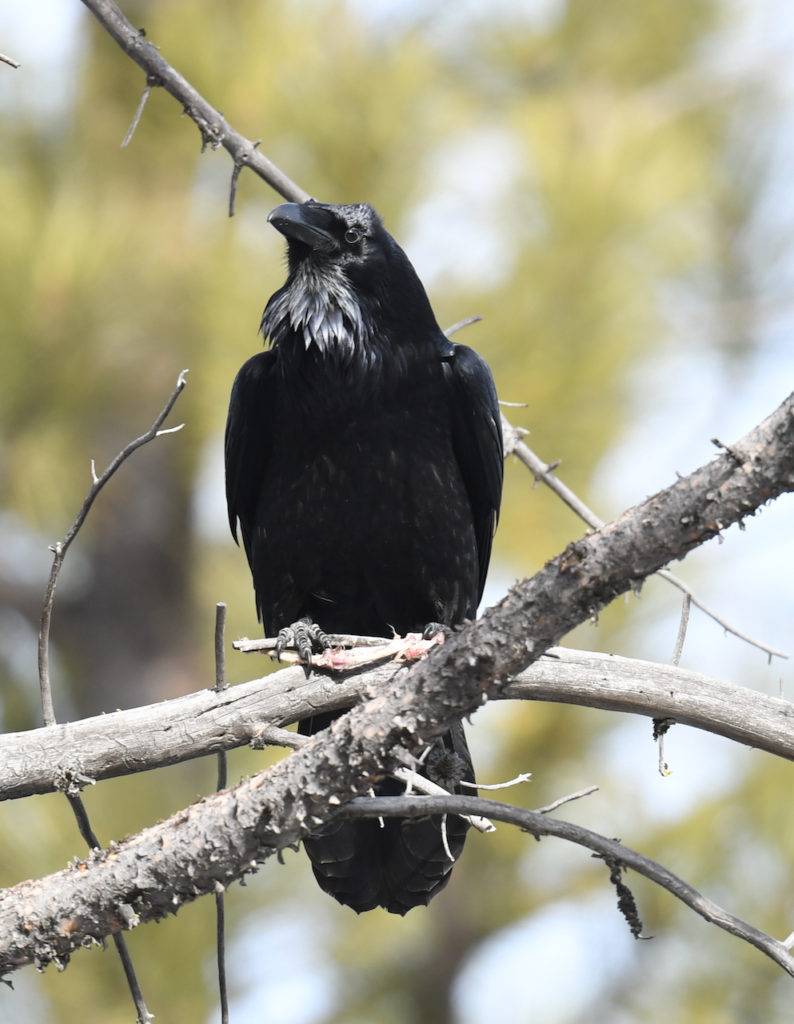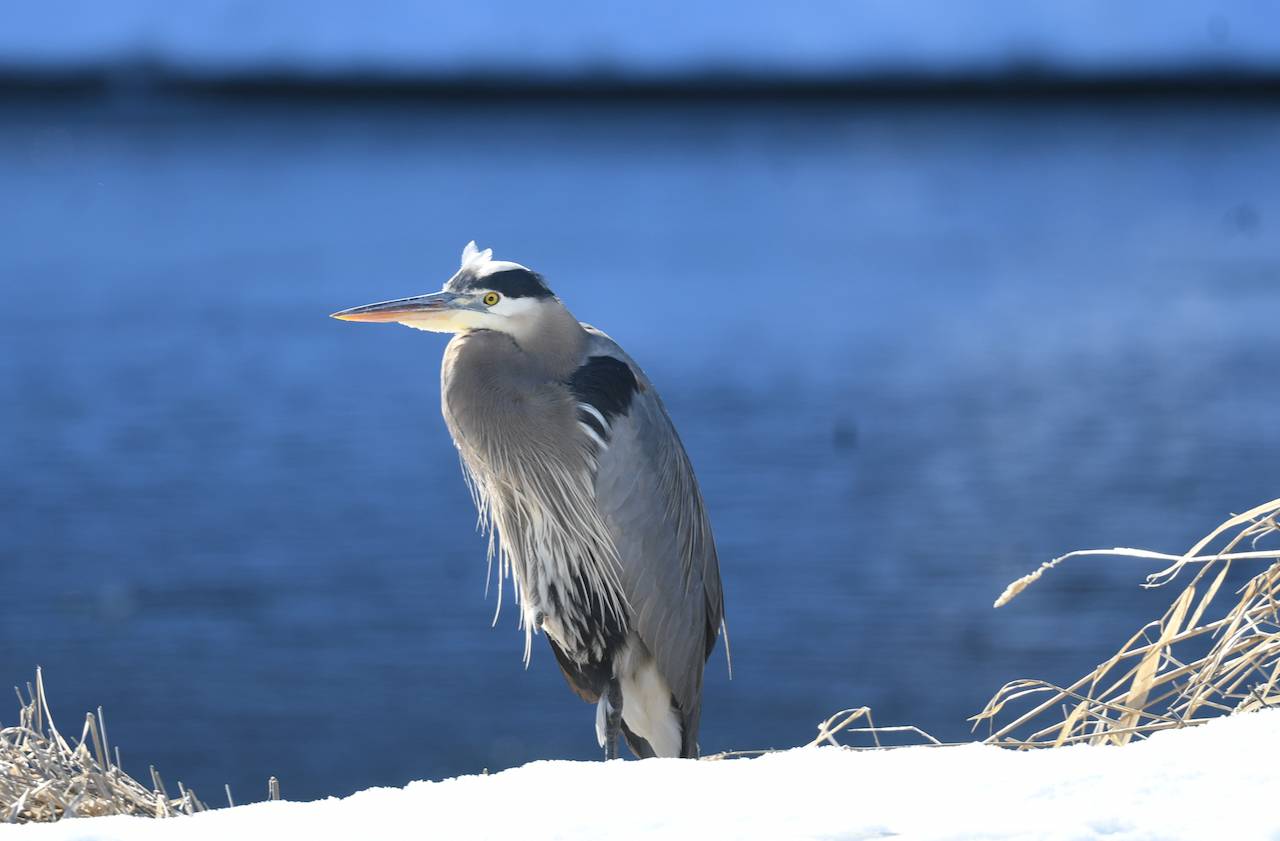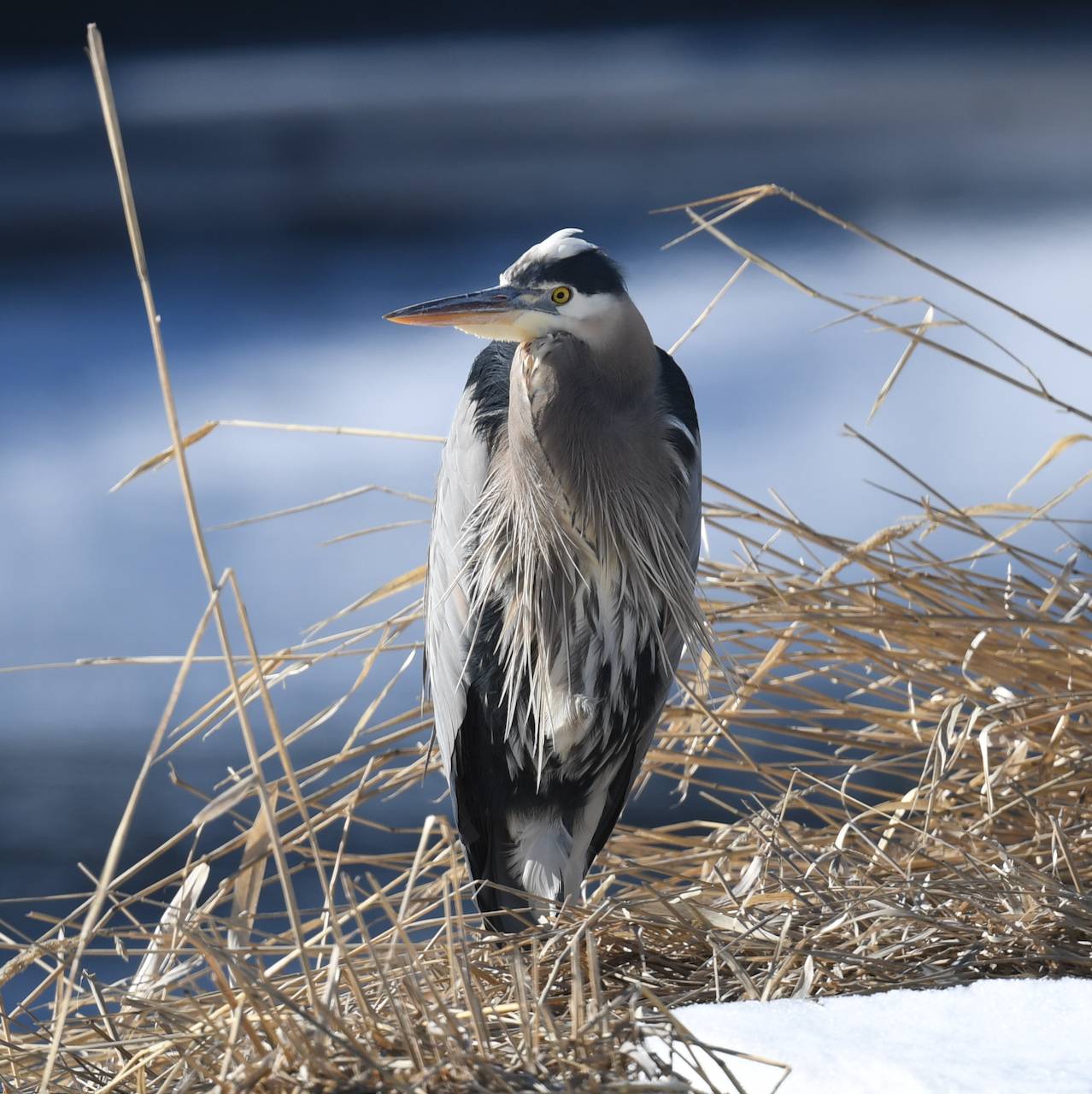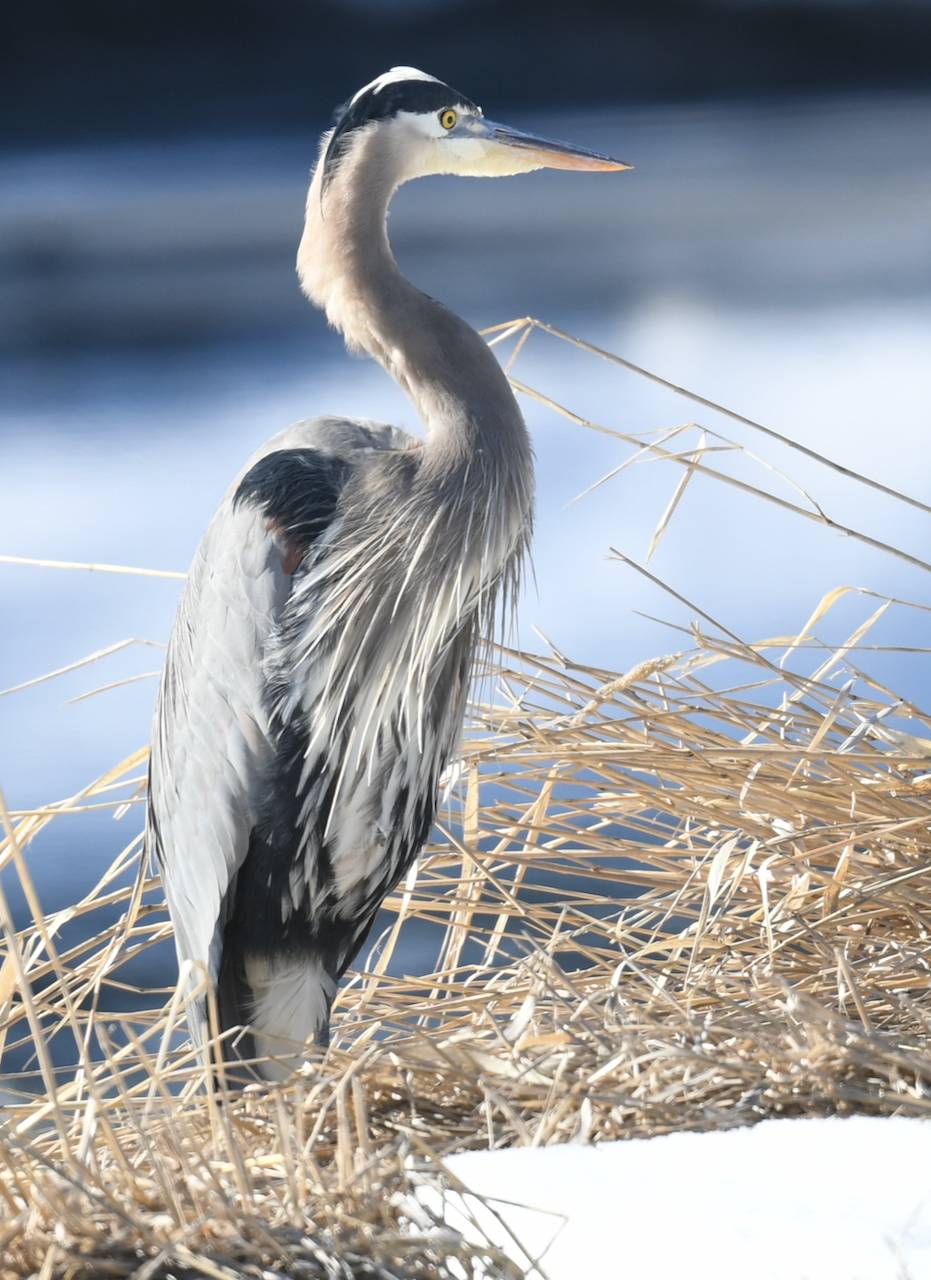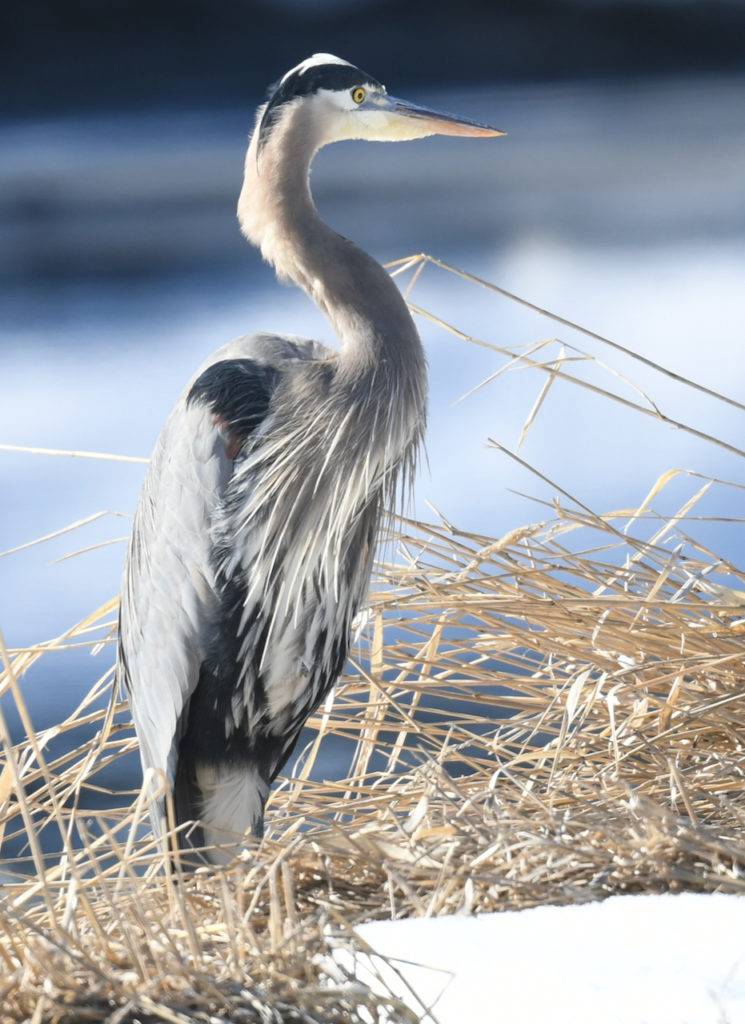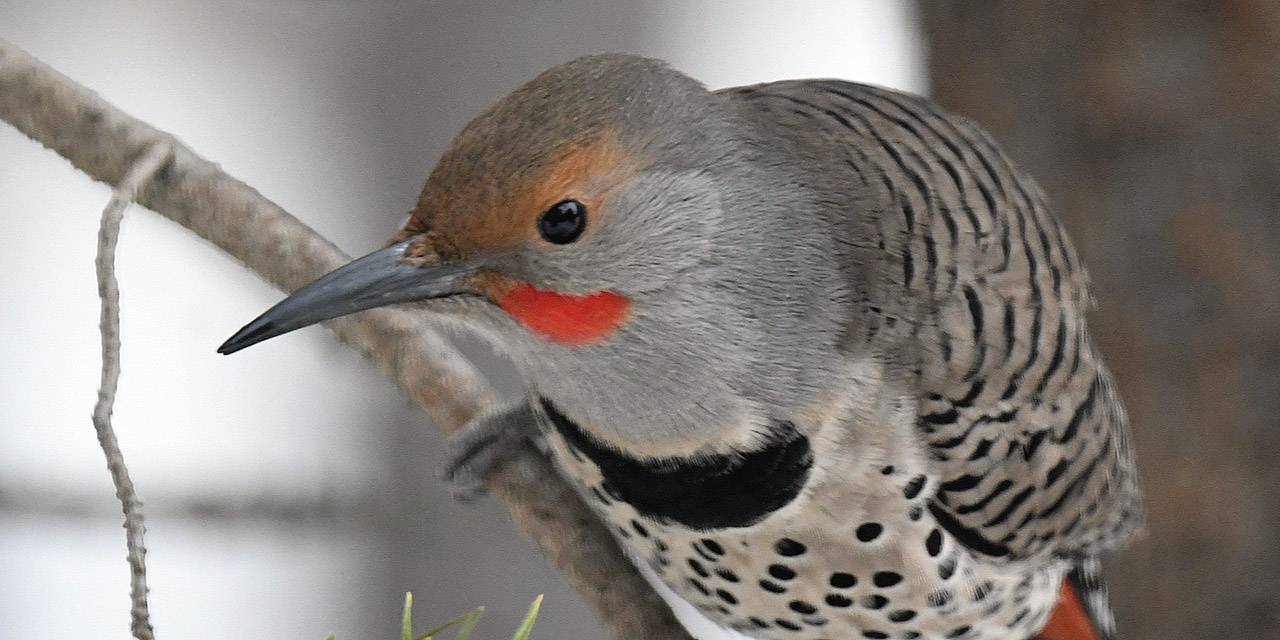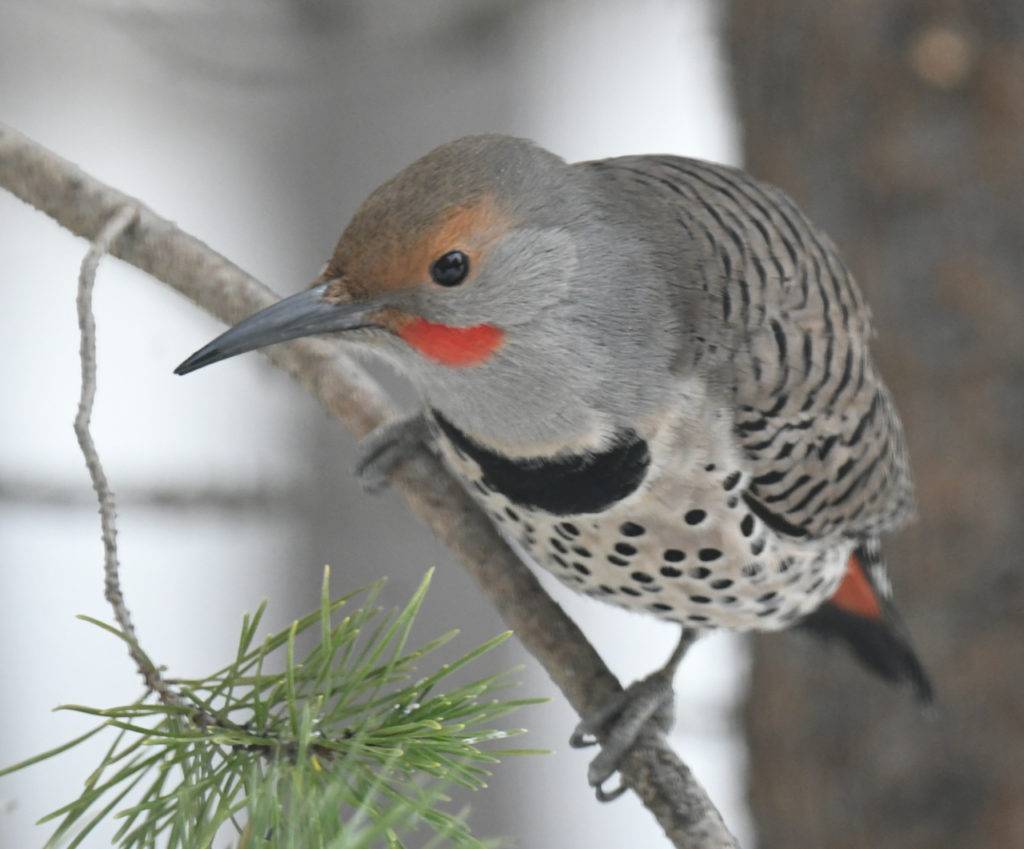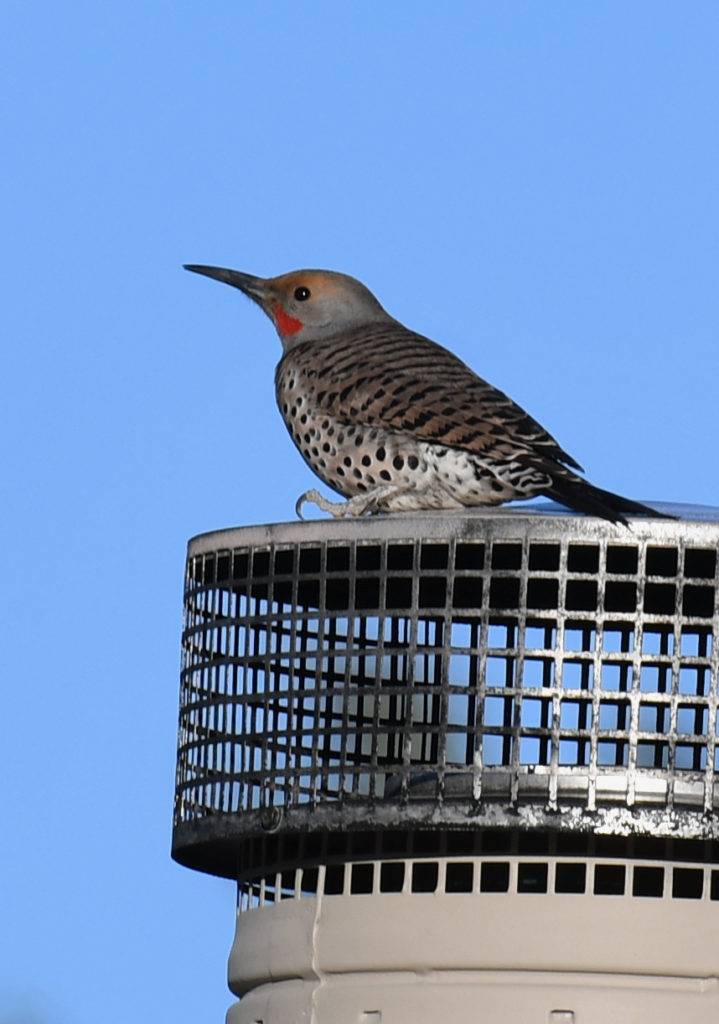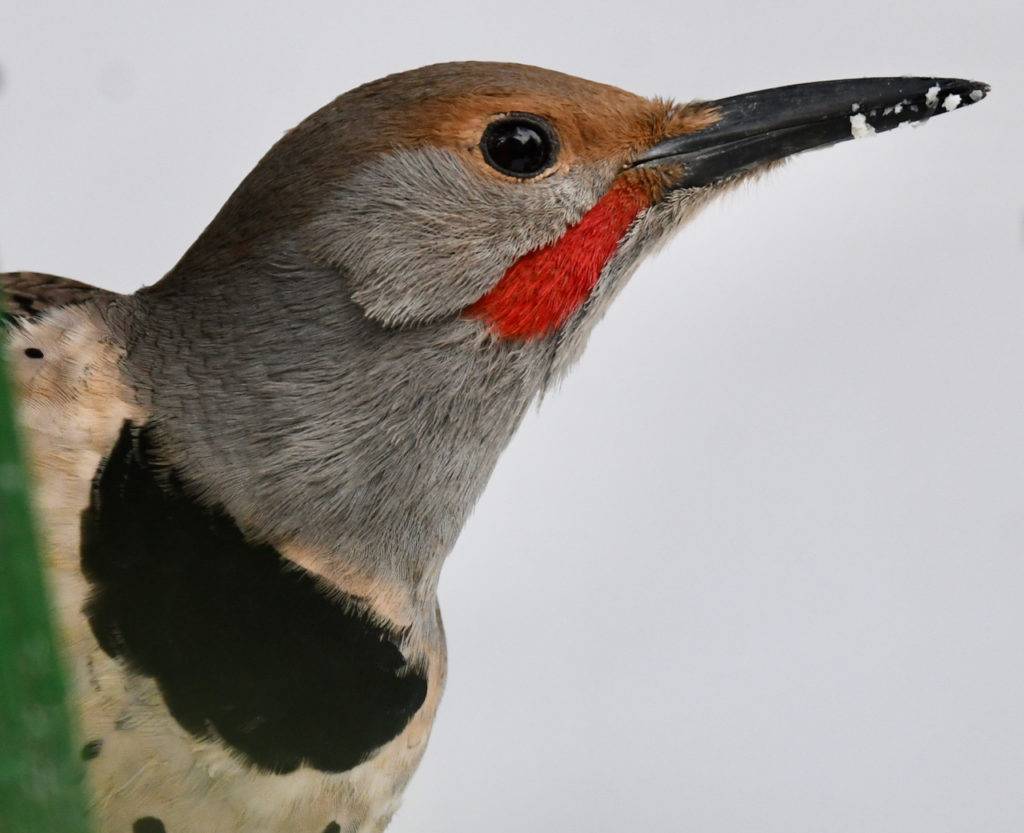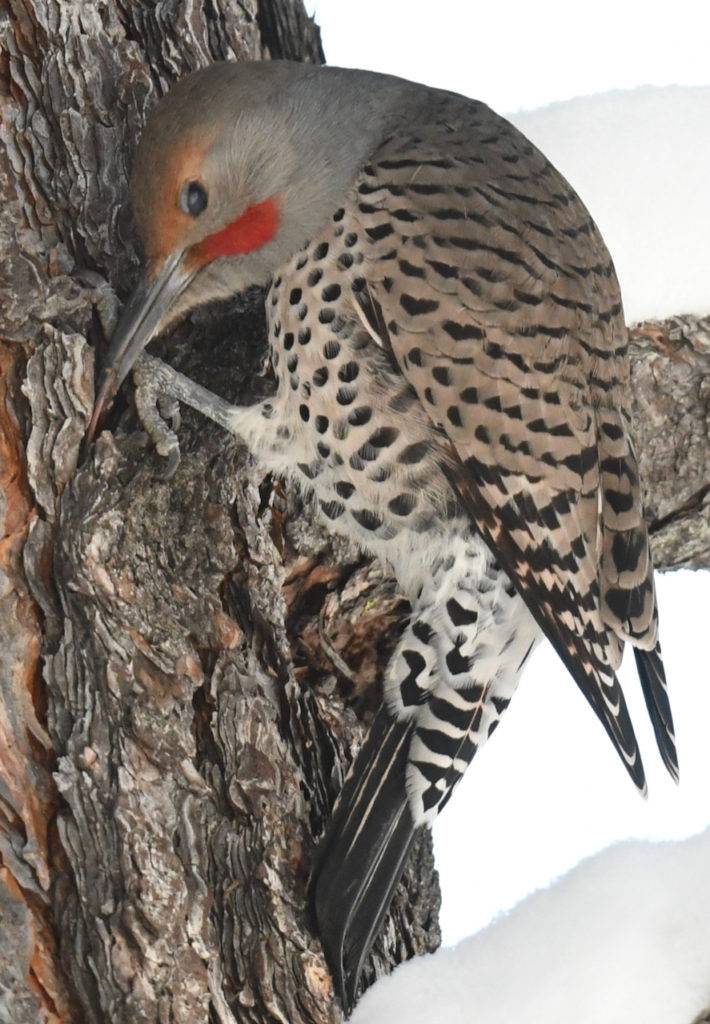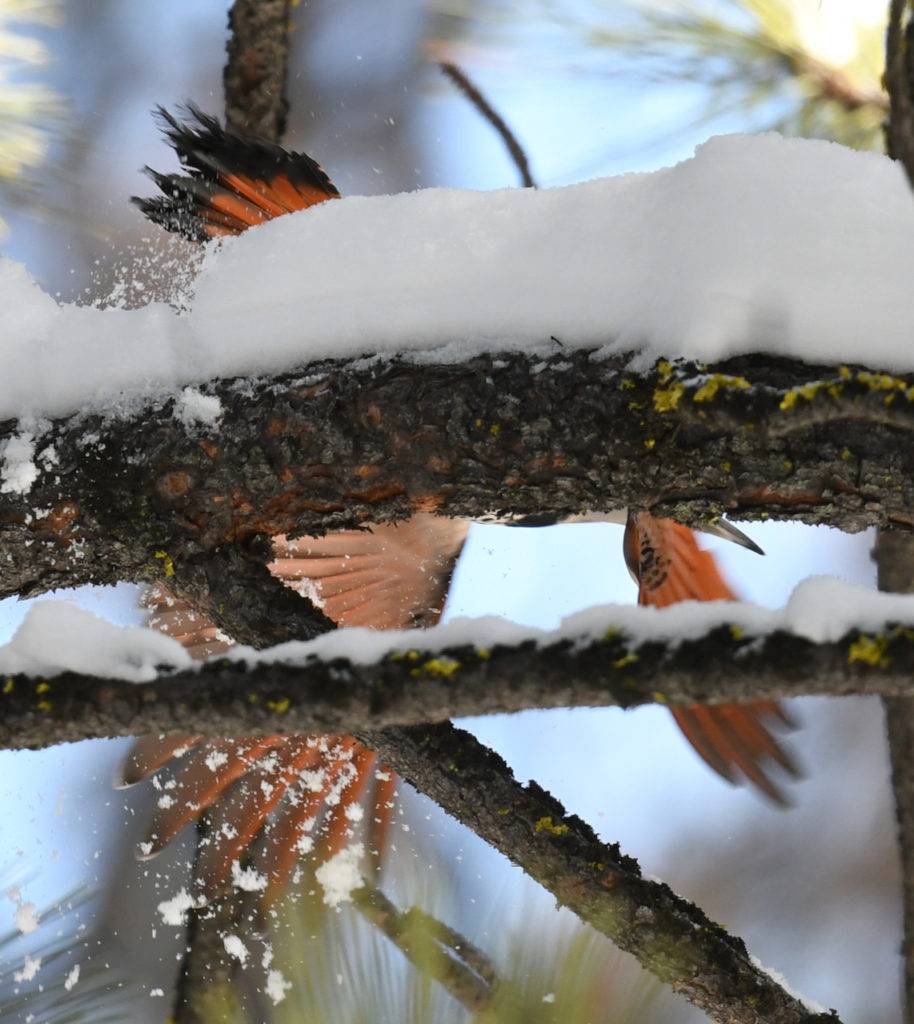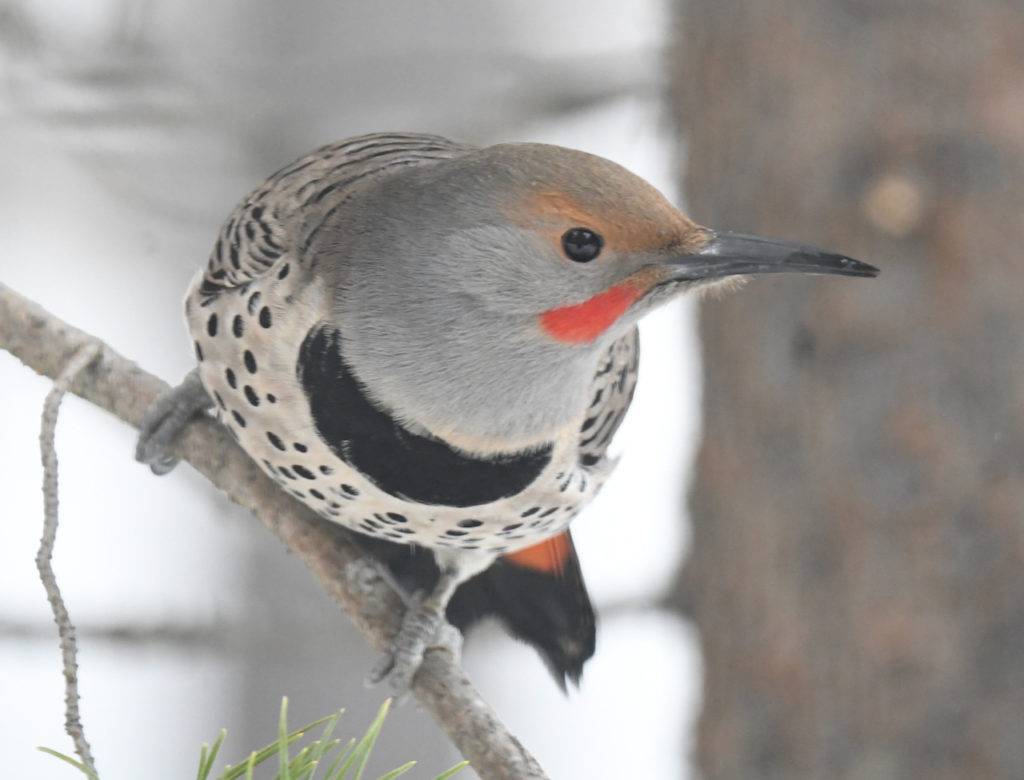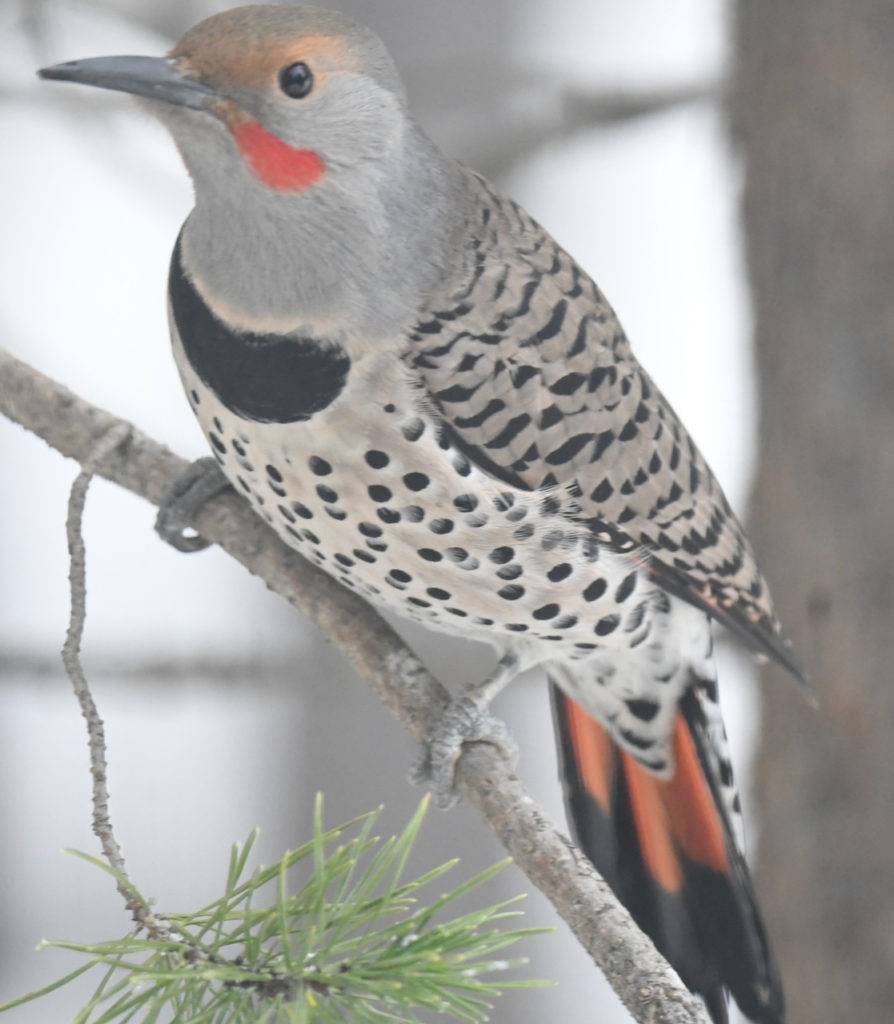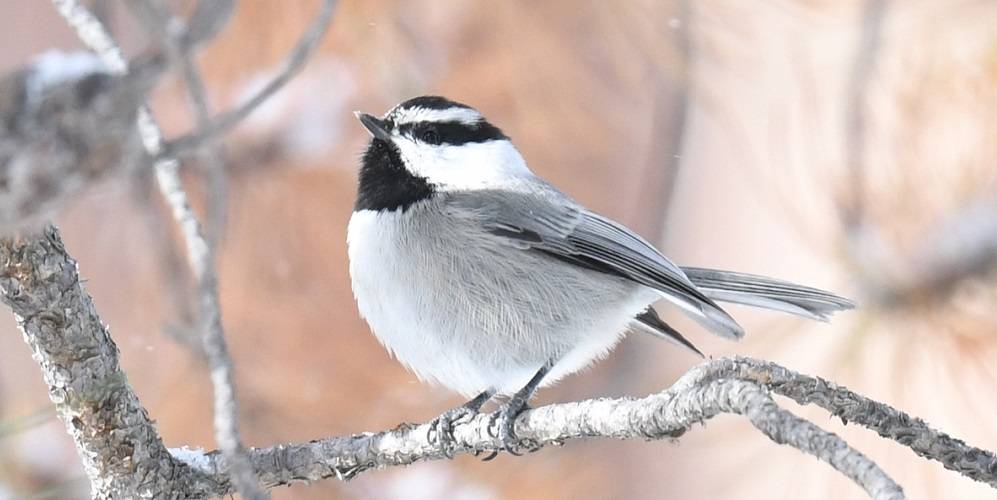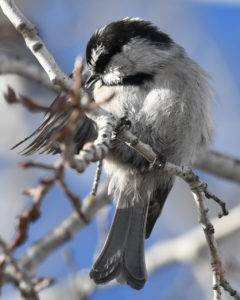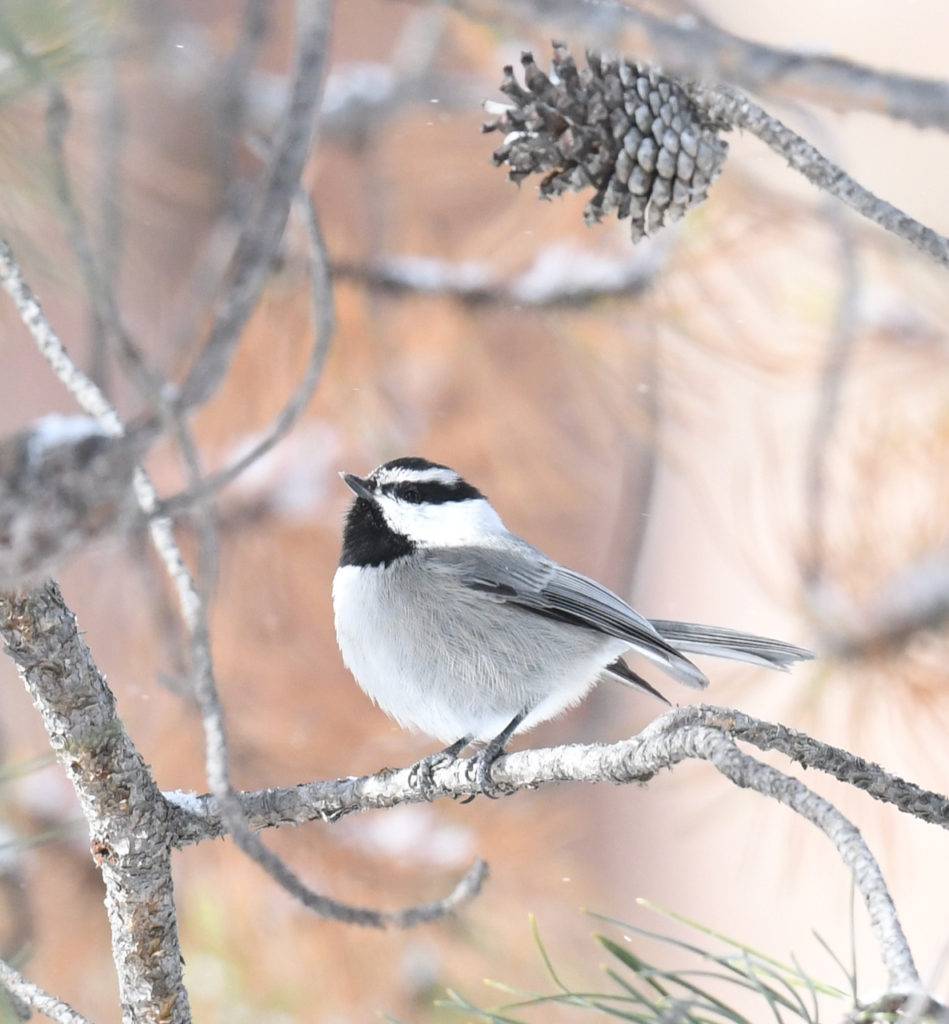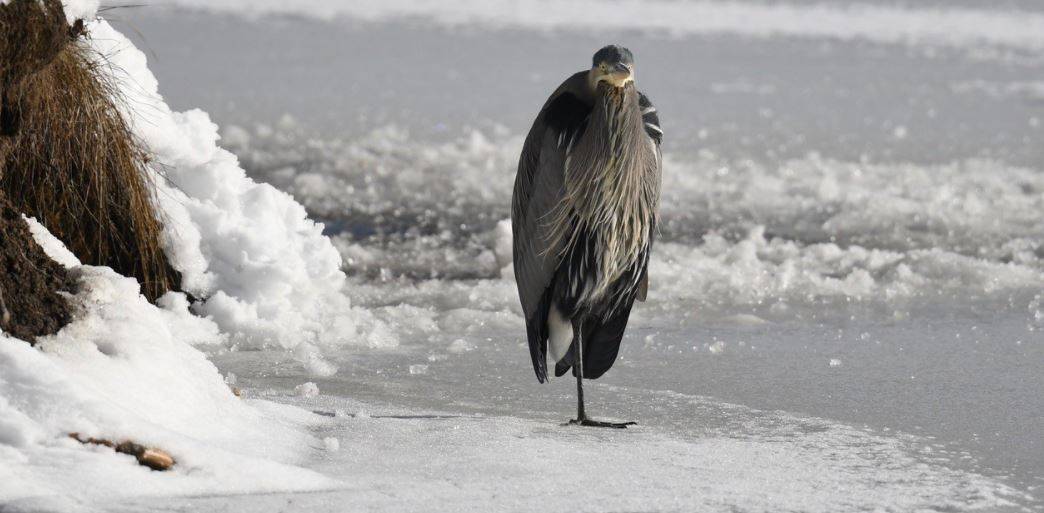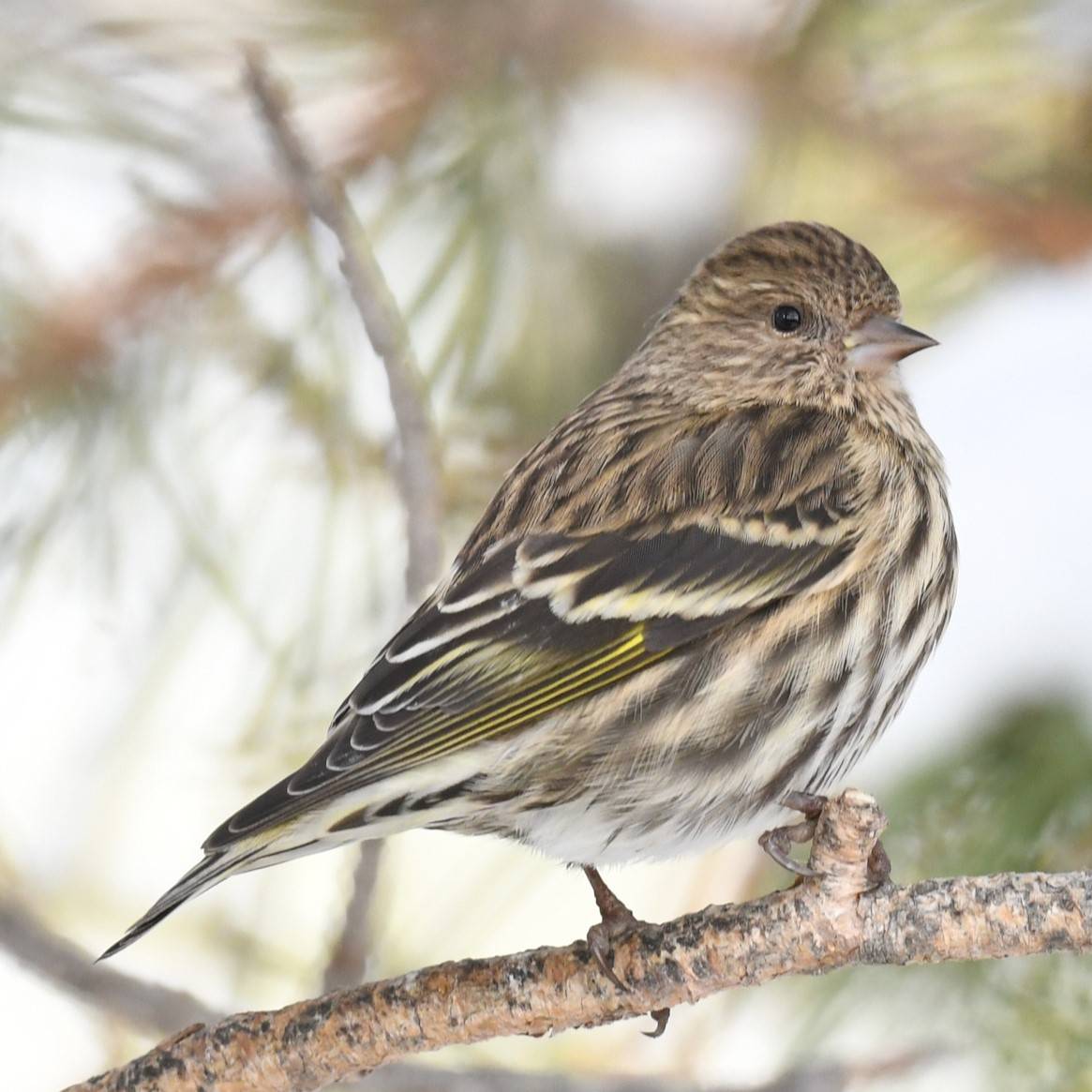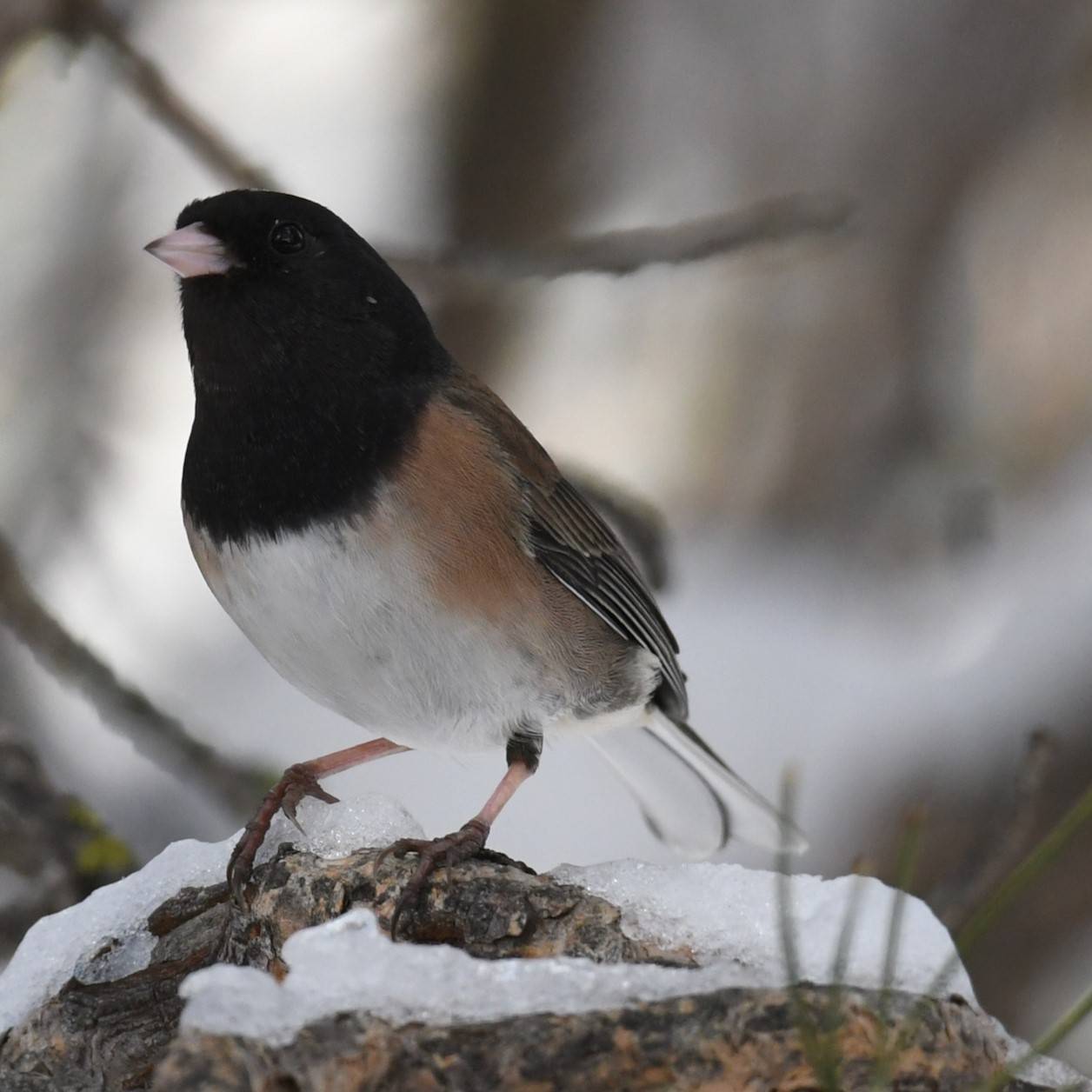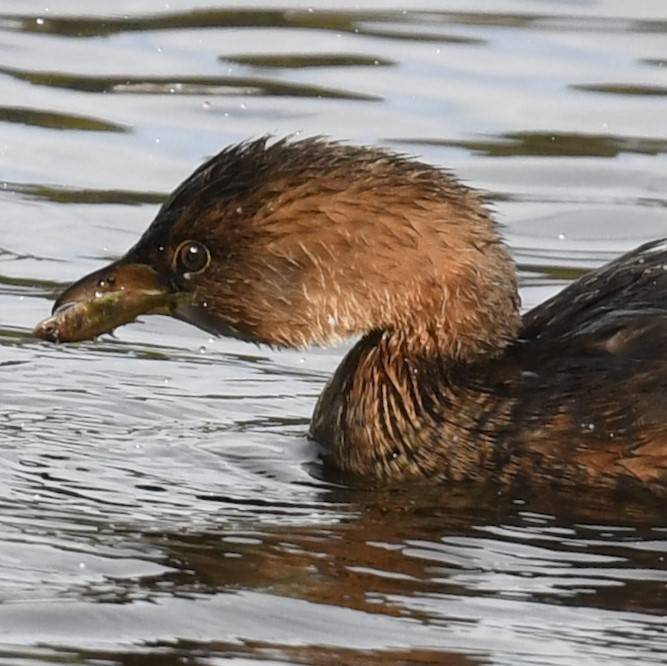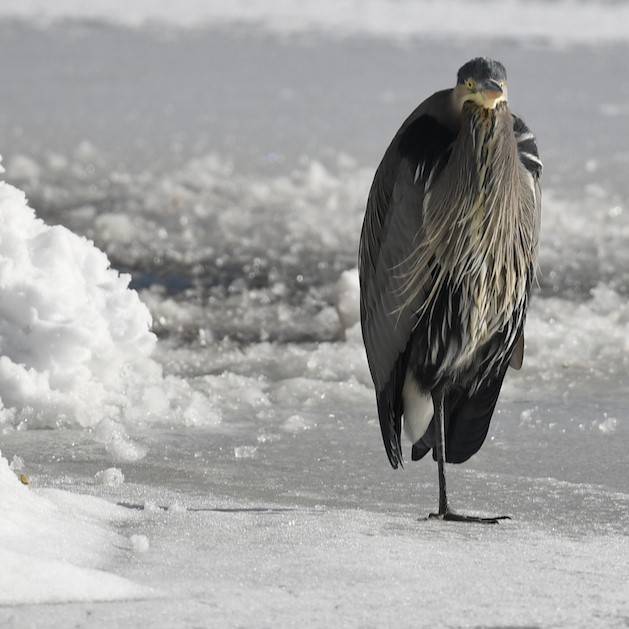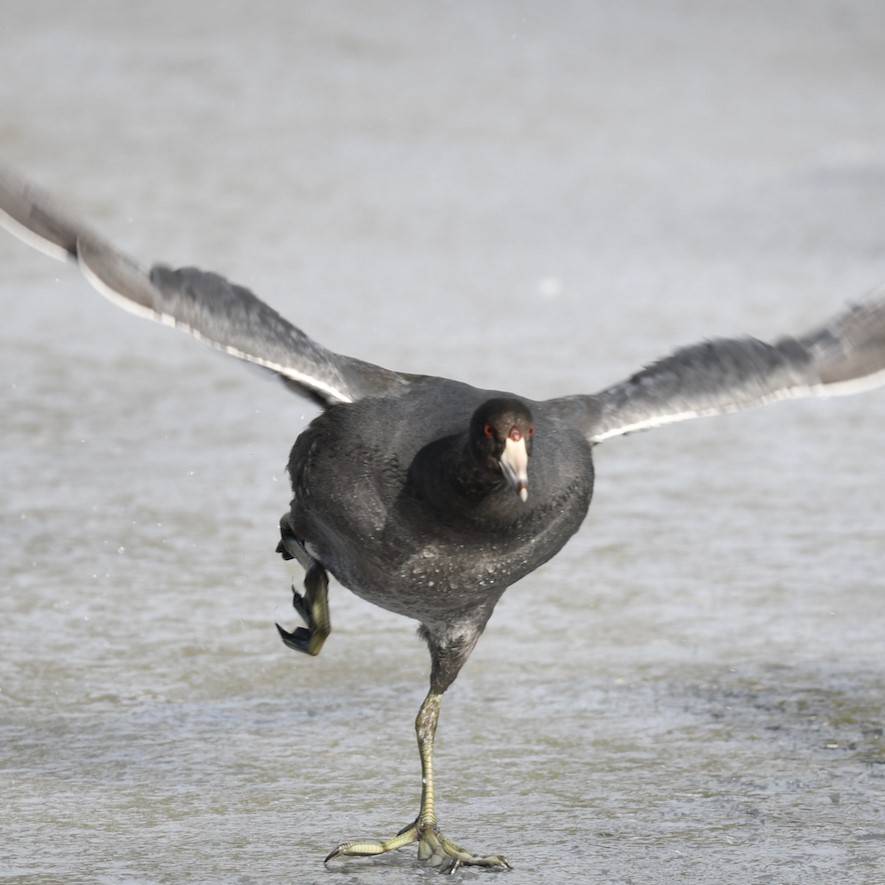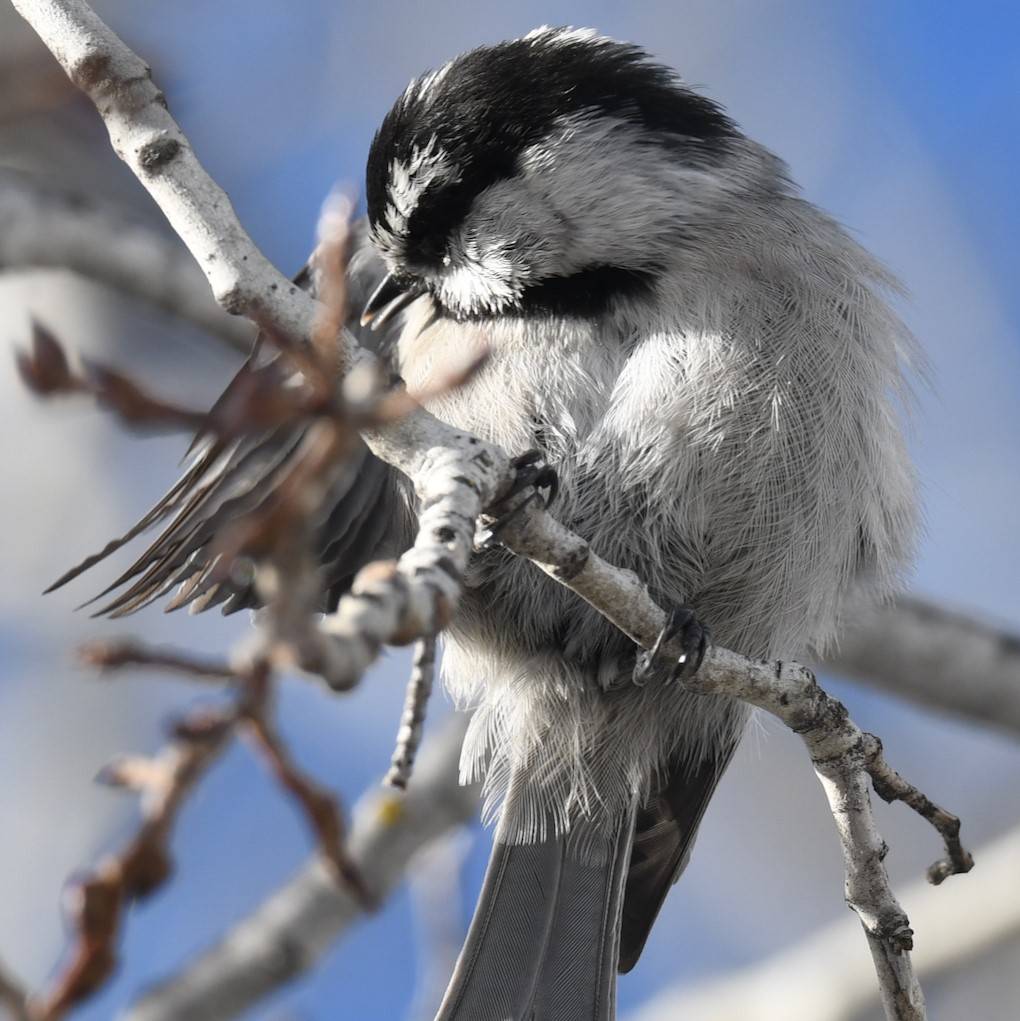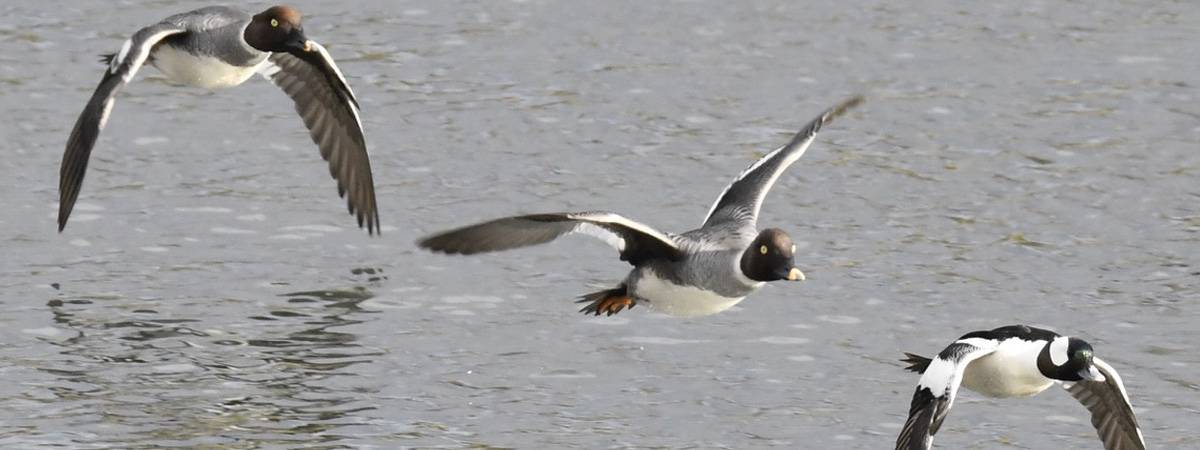
April on Sunriver’s Waterways: A Fond Farewell to Three Winter Duck Species
Common Goldeneye (Bucephala clangula)
Barrows Goldeneye (Bucephala islandica)
Bufflehead (Bucephala albeola)
By Sevilla Rhoads
As we say goodbye to winter’s snow and ice, we bid farewell to three duck species whose calls and beauty cheered the chilly gray months. In April, we get so excited about migratory arrivals we might forget to appreciate Sunriver’s winter ducks. Around this time of year, some of our common winter species head north to breed. If you look at eBird’s illustrated checklists for Sunriver, they show how some birds, like Common Goldeneyes, Barrow’s Goldeneyes, and Buffleheads, go from being regularly seen all winter to rarely reported between April and October.
We will miss our Goldeneyes this summer. They warmed the winter waterscapes with their bright eyes and soft fuzzy helmet-heads. To use a fancy term, Goldeneyes have ‘plumage dimorphism’ because the males are more colorful and ornamented. Males have black and white patterning on their bodies with iridescent (usually) greenish heads sporting a roundish white splotch between the eye and beak. Females have brown heads and mostly gray bodies with slight white barring.
Significant gender appearance differences are common in birds, but often it is the female who is larger or more ornate, like in raptors and Spotted Sandpipers (which should arrive in Sunriver in April). Some assume the reasons behind these sex differences relate solely to mating, but the actual causes are the subject of scientific study and debate.
While looking for Common Goldeneyes, you could spot the less common but equally beautiful Barrow’s Goldeneye. Male Barrow’s often, but not always, have a more purple-sheened head with a white tear-like patch reaching up before the eye. Their wings have a window pattern with less white than the Common Goldeneye. The female Barrow’s is very similar to a female Common Goldeneye.
It is super hard to tell female Goldeneyes apart, but if you feel like challenging yourself, here is a helpful guide by I.D. guru David Sibley: https://www.sibleyguides.com/2010/01/distinguishing-female-barrows-and-common-goldeneyes/. Other issues for identifying female Goldeneyes around Sunriver are how they mingle with males of the other Goldeneye species, and their bill colors vary. On rare occasions, the two Goldeneye species get together and have hybrid offspring. https://www.sibleyguides.com/2010/01/identification-of-hybrid-female-goldeneyes/.
In Sunriver, we often see Goldeneyes on monochrome winter days, so we cannot rely on the colors shown in guidebooks. In low light, even the easier to differentiate males seem black and white with head shapes depending on whether they are fluffed up or just emerged from a dive. So, try looking at the white patterning to tell these guys apart.
Goldeneyes are an excellent example of how hard it can be to rely on general bird guides with only one or two illustrations. Beginner birders and kids quickly become frustrated and confused with a simple guide in hand. Our family takes a few photos and glances at the general guides and apps to find possible matches. Then, we let go of trying to I.D. and focus on enjoying the bird. Later, we go online to eBird and search by species name using the Deschutes County filter feature. While browsing the local photos, having an image of what you saw is helpful, even if it is a smartphone snapshot. Especially after walking on a cold day, it can be fun to browse for I.D. ideas while warming your hands with a cup of tea or hot cocoa.
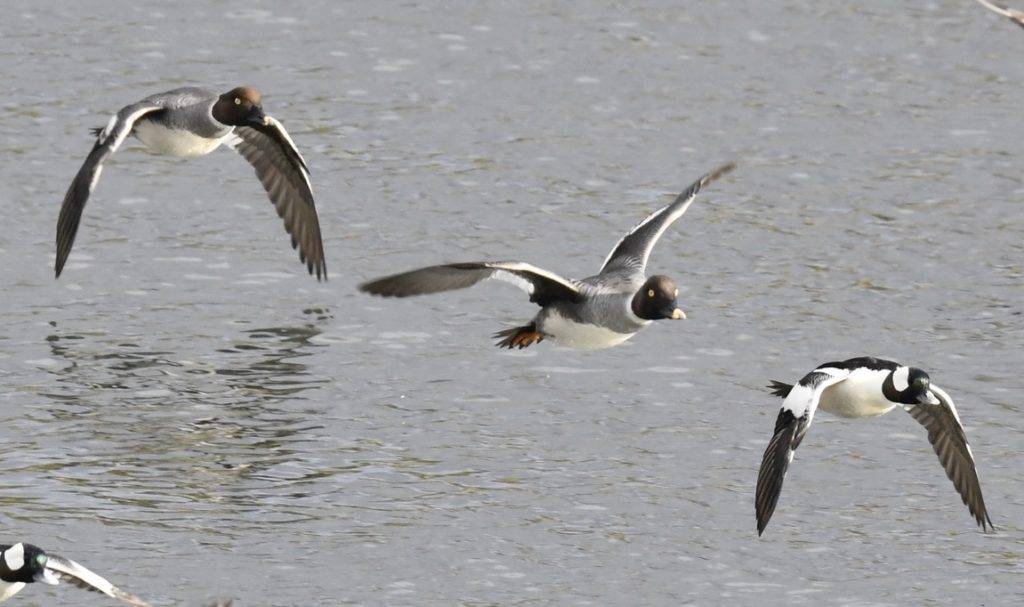
As the Goldeneyes lift off and fly away, listen carefully, and you will understand their hunters’ nickname, “Whistlers.” Spring migration is a good time of year to pause, close your eyes, and open your ears to the sounds of birds flying around Sunriver. Notice the variety of winged harmonies. We tend to focus on calls and miss feather-movement music. Charles Darwin wrote about ‘wing songs’ because many birds’ feathers evolved to create sound as well as serve other functions like flying.
Those paying close attention to Goldeneyes may note that a few lack the signature ‘golden’ eye color. Like many other bird species, Goldeneyes go through startling eye color changes as they age, plus mature males and females have different colored eyes. Goldeneyes are born with brown or gray eyes but then change several times to purple, green, and even turquoise before developing their breeding age shades of yellow. Ornithologists are not sure how or why this happens.
Slowing down to watch Sunriver ducks and notice their details, like eye, bill, and feather colors, we are reminded the natural world still holds many mysteries yet to be understood. It is exciting to know there is so much more to discover, even right here in our ponds and rivers.
For more information on Goldeneyes, see: https://www.allaboutbirds.org/guide/Common_Goldeneye and https://www.allaboutbirds.org/guide/Barrows_Goldeneye.
Around the end of April, it is hard not to feel sad when you watch the last Buffleheads disappear into the northern horizon. Even on the coldest gray days, these adorable fluff balls brought smiles to our freezing faces as they faithfully appeared to bob and dive between the ice flows on the river. From their scientific names, you may notice that Buffleheads and Goldeneyes are both in the genus Bucephala. This ancient Greek word meant ‘bull head’ to describe the bulbous shape. The prefix ‘Buffle’ may be related to the form of a Buffalo’s head.
The male Bufflehead’s shape is most apparent when he fans out his white hood bordered by iridescent green and purple. His back is black, and his chest and flanks are bright white. Another plumage dimorphic species, the female Bufflehead, is a more brownish-grey with a small white dot on her face. Buffleheads are often the smallest duck on Sunriver’s winter waterways. Some scientists think they evolved to this size to fit in Northern Flicker nesting holes.
For more identification information about Buffleheads, see https://www.allaboutbirds.org/guide/Bufflehead

Buffleheads, affectionally known as Buffies, are so adored on Vancouver Island, B.C., that they appear on one town’s official emblem. On October 15th, British Columbia celebrates All Bufflehead Day because, according to at least twenty-three years of records, this is the exact date Buffleheads annually arrive in a nature preserve near Sidney, B.C. The Canadian government has a public service announcement asking people to leash dogs near waterways and respect the survival needs of wintering Buffleheads.
April is a particularly fun time to look for the last Goldeneyes and Buffleheads because they start rehearsing their courtship shows. There are few sights more entertaining than diving ducks engaged in a dance ‘battle.’ The Common Goldeneye has at least fourteen moves for which ornithologists have names like the “masthead,” “bowsprit,” and the “head throw kick.” For those of you who watched Seinfeld, try to suppress a grin as the latter move evokes Elaine’s signature groove! For more modern readers, like some of our kids, no need for YouTube tutorials on Hip-hop ‘body waves’ and ‘body rolls’ when Goldeneyes and Buffleheads provide free professional demonstrations on your local waterways. However, if seeking to impress on the dance floor, perhaps leave out the braying and oinking, which likely only entices female ducks, not humans…
As if the multi-colored eyes and courtship spectacles were not enough to make Goldeneyes and Buffleheads fascinating, what happens in the first day of a Bucephalas’s life is even more riveting. Like Wood Ducks and Hooded Mergansers, Bucephalas nest in tree cavities, usually made by woodpeckers. Many of these nests are high above the ground, around four or five stories (fifty feet or so) up. Within about a day after the (extremely cute) chicks hatch, mother duck flies off to the nearest waterway (which could be up to a mile away). She then calls to the chicks to follow her! Yes, those tiny and rather floppy babies are expected to first climb up the steep inside wall of the nest, then hurl themselves to the distant ground below, get up quickly, run to the water (over all obstacles), fling themselves into the water and finally swim for their lives regardless of waves (which often are much bigger than the duckling). Showing kids a video about day-old Goldeneye chicks is a great way to quell complaints about having to get out of bed for school! My kids enjoy watching (again and again) Per-Finn Nielsen’s “Duckling Jump”https://www.youtube.com/channel/UCLE7kxe3bnO9gi5kOsj8A7Q/videos
If you wonder how ducklings climb up vertical nest walls, check out the PBS Nature video about Hooded Merganser chicks, which explains how some ducklings have special hooks on their feet. https://www.pbs.org/video/nature-its-raining-ducks/.
So, for those of you enjoying the warmer Sunriver spring days at the Lodge’s outdoor grill or perhaps when golfing, biking and strolling alongside the ponds and river, take a moment to thank our Buffies and Goldeneyes for being part of our winter wonderland and wish them well for their northern travel and adventures.

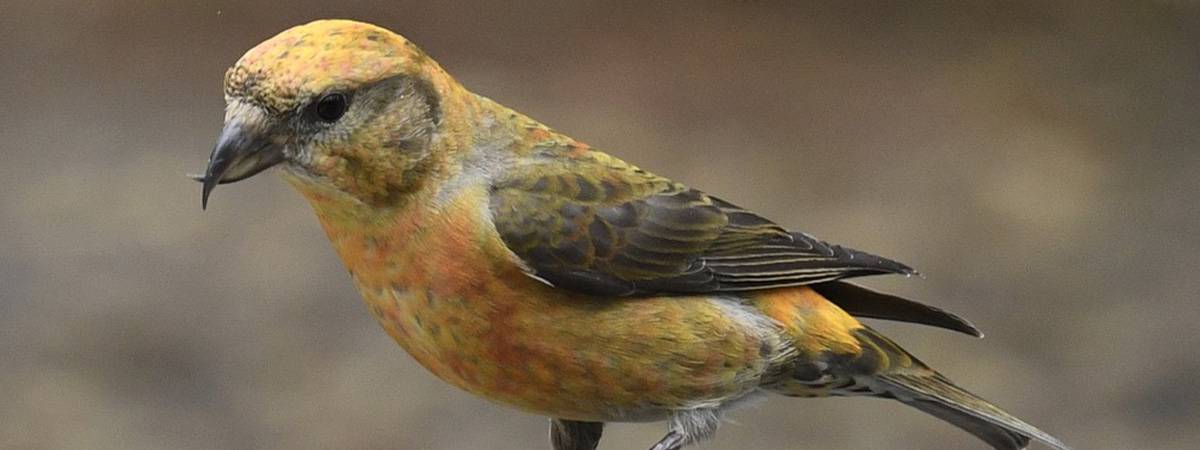
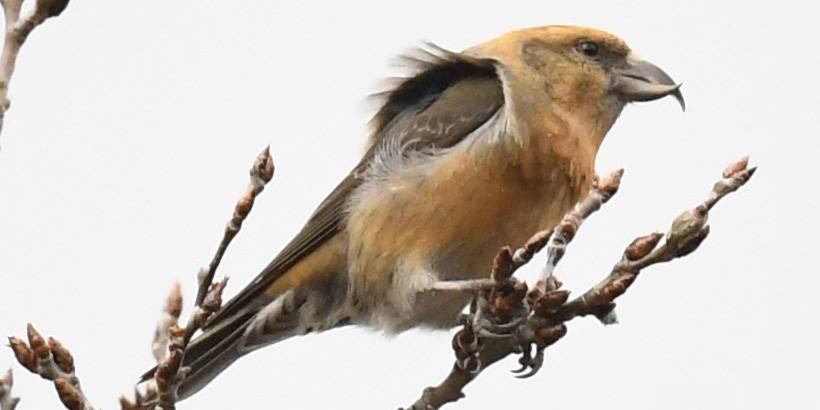 With their groovy tie-dye plumages, Red Crossbills all have bizarre-looking crossed beaks that are specially adapted for the types of pine cones they eat. These crossed bills are excellent utensils for prying out delicious pine seeds.
With their groovy tie-dye plumages, Red Crossbills all have bizarre-looking crossed beaks that are specially adapted for the types of pine cones they eat. These crossed bills are excellent utensils for prying out delicious pine seeds. 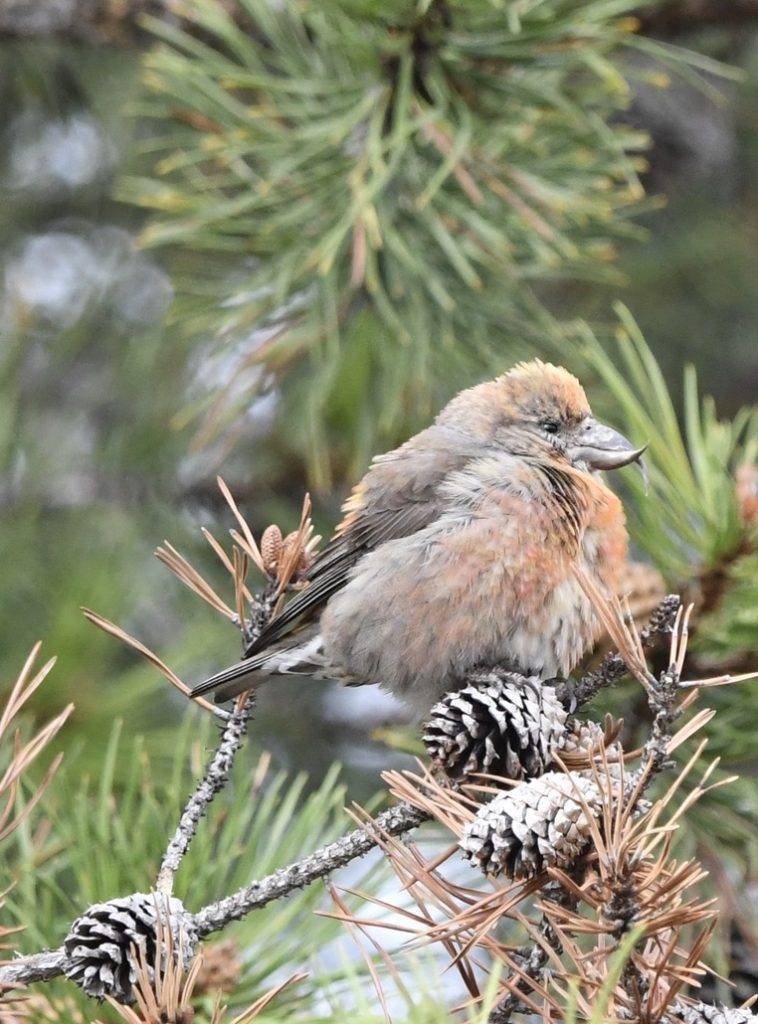 One reason to never tire of Crossbill-watching is their wide range of fashion and calls. Most guidebook illustrations cannot do justice for Crossbill looks where they only show two or three plumages. In Sunriver, Crossbills seem to have mastered every variation of the rainbow colors above the blue line!
One reason to never tire of Crossbill-watching is their wide range of fashion and calls. Most guidebook illustrations cannot do justice for Crossbill looks where they only show two or three plumages. In Sunriver, Crossbills seem to have mastered every variation of the rainbow colors above the blue line!